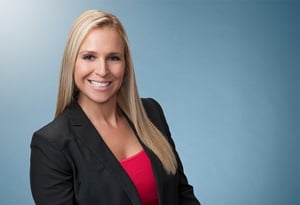IRS Allows DOE’s Modified GREET Model and USDA’s Climate Smart Agriculture Program for Sustainable Aviation Fuel Tax Credit
At a Glance
- The Internal Revenue Service (IRS) published their third guidance on sustainable aviation fuel (SAF) tax credits provided under the Inflation Reduction Act (IRA).
- This guidance will serve as the basis of how companies and investors will determine the value of SAF tax credits in the future.
- This guidance provides “safe harbors” for companies to use when calculating lifecycle greenhouse gas emission reductions and for third party certifications.
- IRS has approved the Department of Energy’s modified Greenhouse gases, Regulated Emissions, and Energy Use in Technologies (GREET) model: 40BSAF-GREET 2024.
- IRS allows for additional SAF tax credits by using the Department of Agriculture’s Climate Smart Agriculture pilot program for corn and soybeans.
On April 30, 2024, the Department of Treasury and IRS issued new SAF tax credit guidance created by the Inflation Reduction Act (IRA). This guidance was developed in consultation with the Environmental Protection Agency (EPA), Department of Energy (DOE), Department of Agriculture (USDA), and the Federal Aviation Administration (FAA).
This is the third guidance the IRS has issued with respect to the SAF tax credits.1
SAF tax credits must be certified to have a lifecycle GHG emission reduction percentage of at least 50%. Therefore, how one calculates lifecycle GHG emissions is paramount — and there are multiple potential ways to calculate those emissions.
According to Section 40B(e) of the IRA, calculation of lifecycle GHG emissions reduction percentage must use the most recent Carbon Offsetting and Reduction Scheme for International Aviation (CORSIA) that has been adopted by the International Civil Aviation Organization (ICAO) or any similar methodology that satisfies the criteria under § 211(o)(1)(H) of the Clean Air Act that was in effect on August 16, 2022.
This guidance provides “safe harbors” for calculating lifecycle GHG emission reductions and unrelated party (i.e., third party) certifications.
This means that companies have an approved method for how to calculate the value of the SAF tax credits and what certifications are necessary. This will serve as the basis of how companies and investors will evaluate the value of SAF tax credits in the future.
Overview of the SAF tax credit
The SAF tax credits currently only apply for SAF sold or used between December 31, 2022, and January 1, 2025 — although there are groups pushing Congress to extend the SAF tax credit. To obtain the SAF tax credit, companies must provide the lifecycle GHG emissions reductions using the fuel as compared to petroleum-based jet fuel.2 Additionally, the company must provide a certification from an unrelated party (i.e., third party) demonstrating compliance similar to the CORSIA methodology.
The SAF tax credit is calculated by the product of (1) the number of gallons of SAF; and (2) between $1.25 to $1.75 dependent on the GHG emission reduction value above 50%.
Safe Harbors
GHG Emission Reduction Models
The IRS is providing a safe harbor for two GHG emission reduction models:
- DOE’s modified Greenhouse gases, Regulated Emissions, and Energy Use in Technologies (GREET) model: 40BSAF-GREET 2024
- USDA Climate Smart Agriculture (CSA) pilot program
The 40BSAF-GREET 2024 model is a modified version of the GREET model that EPA states resolves deficiencies in the GREET model. The 40BSAF-GREET 2024 model calculates lifecycle GHG emissions associated with SAF production from hydroprocessed esters and fatty acids (HEFA production pathway) and alcohol-to-jet (ATJ-Ethanol production pathways).
The USDA CSA pilot program incorporates CSA practices for CSA crops that are used as feedstocks for SAF synthetic blending components, which results in reducing lifecycle GHG emissions. The IRS is establishing an additional reduction for CSA corn used in ATJ-Ethanol production pathways or CSA soybean used in the HEFA production pathway — known as a CSA reduction.
The CSA reduction credit for CSA corn is an additional 10 gCO2e/MJ and for CSA soybean is 5 gCO2e/MJ.
For example, a company that produces five million gallons of SAF a year that is 100% CSA corn and the GHG emissions calculated under 40BSAF-GREET 2024 is 40 gCO2e/MJ would result in a 66% reduction in GHG emissions. The company would be provided $1.25 + $0.16 or $1.36 tax credit for each gallon produced. Therefore, the overall SAF tax credit for the company would be approximately $6.8 million a year.
Unrelated party (i.e., third party) certifications
The IRS is providing a safe harbor for third party certifications of the 40BSAF-GREET 2024 model and the CSA pilot program.
For the 40BSAF-GREET 2024 model, the IRS is allowing companies that use California Air Resources Board (CARB) Low Carbon Fuel Standard (LCFS) verifiers to serve as third party certification for the SAF tax credit. The CARB LCFS verification safe harbor is only applicable to companies that are using the 40BSAF-GREET 2024 model and meet the requirements of ASTM D7566.
The verifier must certify the information in a format substantially similar to CARB’s LCFS verification statement and certify the foreground data of the 40BSAF-GREET 2024 model Excel workbook and other requirements provided in the user manual.
The IRS also provides a safe harbor for the certification of the CSA reduction credit under the CSA pilot program. To obtain the CSA reduction credit, the company must obtain third-party certification consistent with the USDA CSA Pilot Program. The CSA certifier must meet the requirement for Eligible Unrelated Party Certification Bodies in the USDA CSA Pilot Program.
- Notice 2023-06; Notice 2024-06.
- The IRS currently treats the lifecycle GHG emissions of petroleum-based jet fuel as equal to 89 grams of carbon dioxide equivalent per megajoule of energy (gCO2e/MJ).
The material contained in this communication is informational, general in nature and does not constitute legal advice. The material contained in this communication should not be relied upon or used without consulting a lawyer to consider your specific circumstances. This communication was published on the date specified and may not include any changes in the topics, laws, rules or regulations covered. Receipt of this communication does not establish an attorney-client relationship. In some jurisdictions, this communication may be considered attorney advertising.



